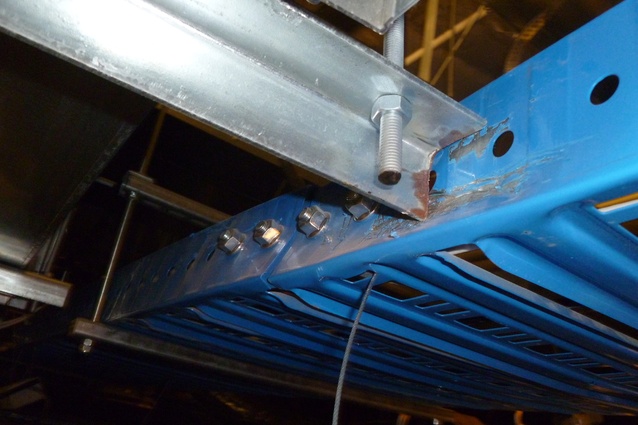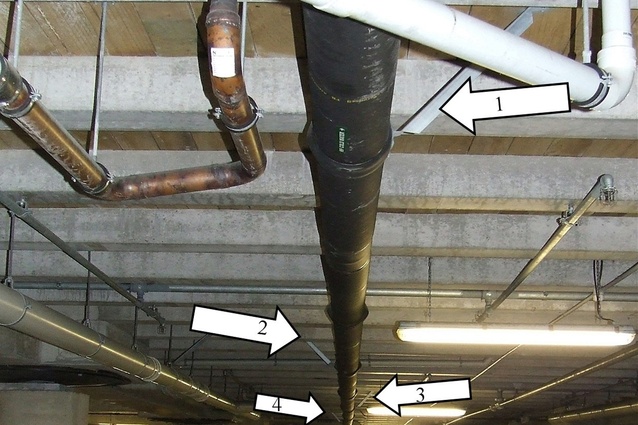Turning a blind eye
Director of VAICO Seismic Bracing, Milton How, says less than five per cent of New Zealand buildings comply with a vital, but widely misunderstood, seismic standard.
Well beyond the all-important considerations around saving lives in the event of an earthquake, there are many economic and social consequences arising from non-structural earthquake damage to commercial buildings that are entirely preventable.
According to the United States Federal Emergency Management Agency (FEMA), non-structural failures have accounted for the majority of loss in several recent earthquakes. As a result, the agency has said it is critical to raise awareness about potential non-structural risks, the costly consequences of non-structural failures, and the opportunities that exist to limit future losses.
Yes, ceiling damage and damage to building services suspended above the ceiling have a cost associated with performing the repair, but what often goes unnoticed are the devastating consequences for those forced out of work while waiting for repair or replacement of non-structural elements to be completed.
These types of repairs rarely proceed quickly, often taking many months, during which time firms are forced to scale back activity or close, creating huge economic hardship affecting the local community beyond just the damaged structures. Often, non-structural components account for between 75 and 80 per cent of a building’s total value. Non-structural components include all elements that are not part of the structural system, and include all of the architectural, mechanical, electrical and plumbing systems, as well as furniture, fixtures, equipment and contents.
Post-earthquake damage surveys from around the world show that nearly 85 per cent of the costs associated with building damage in earthquakes is related to non-structural systems. In New Zealand there is concern that many officials, building owners, insurance companies and stakeholders in general appear to think the existence of a PS3 is evidence that a building has seismic restraints and complies with NZS4219:2009 Seismic Performance of Engineering Systems in Buildings.

Compliance with this standard is one way to limit potential non-structural earthquake damage. It covers the seismic restraint of suspended, linear engineering systems in buildings. However, simply having a PS3 is not good enough. A draft University of Canterbury report by Associate Professor of Structural and Earthquake Engineering, Rajesh Dhakal, demonstrates seismic restraints on mechanical, electrical, plumbing and fire services are all too often left out.
The seismic design requirements for non-structural components contained within NZS1170 or NZS4219 are not well understood or enforced within the New Zealand design and construction community. It would be more accurate to say that very few buildings, including those classed as Importance Level 4, actually comply. Despite the standard having been in place since 1983, and revised in 2009, many commercial buildings have virtually no seismic restraints at all.
Most mechanical, electrical, plumbing and fire services companies tag out seismic restraints at the time of tender, which makes any restraints most likely to be left out, and the contract then signed off without restraints. We need to ensure the industry recognises its shortcomings in this regard, and makes whatever changes are required to design documentation, construction processes and certification to ensure new buildings do comply. This is critical not only for the Canterbury rebuild, but for the whole country.
The Ministry of Business Innovation and Employment is looking into information showing buildings are being built without effective seismic restraint systems or, in some cases, without any seismic restraint systems at all in respect of NZS4219:2009. A workshop meeting was held at the University of Canterbury in March with various industry stakeholders and researchers to discuss why this is happening, and issues surrounding a lack of understanding, insufficient guidance, poor procurement practices and lack of coordination that could be leading to the current situation.
Research by Dr Rajesh Dhakal outlines that a large proportion of the $40 billion Christchurch rebuild bill could be attributed to non-structural elements and contents. He found engineers had tended to concentrate on the primary building structure, and had not specifically considered non-structural and content damage. He also found the existing standards did not cover all services, or the interaction between them, and there were issues evident surrounding installation, final inspection and sign off.
Sadly, we learn the most about preventing earthquake damage from events like those in Canterbury. We should take the Christchurch earthquakes as a reminder that Building Code requirements define only the minimum standards for construction.
Ideally, building owners and construction professionals will work together to ensure not only that requirements are met, but necessary precautions are in place to adequately protect lives and mitigate the loss of construction investments and business continuity.











